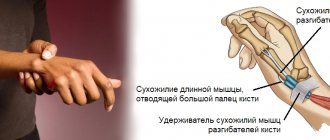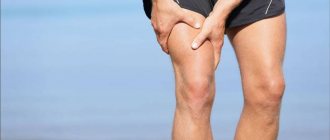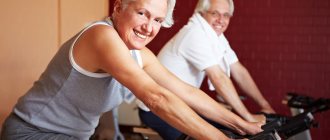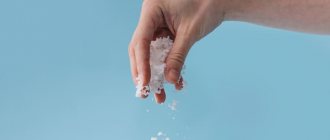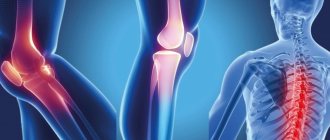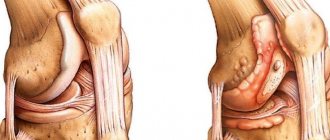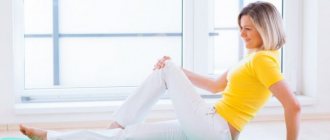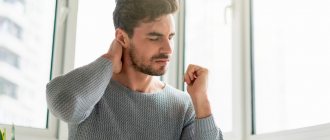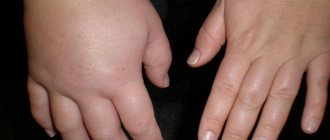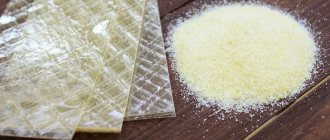How to get rid of muscle pain after training - many athletes face this problem. The question is especially relevant for beginners who are passionate about the idea of radically improving their body, but have not yet understood its capabilities. And having started to play sports intensively, without knowing laziness, they immediately began to perform quite complex sets of exercises.
24-48 hours after the first productive lesson, sore throat sets in, which can ruin not only a positive attitude, but also become an obstacle to the further program. It can be so strong that it prevents you from performing the usual simple actions - getting out of bed, going down the front steps or picking up a child.
If you have this condition, you must:
- make sure that these sensations are not a reaction to trauma and are truly harmless;
- take a warm bath or contrast shower, which will help quickly get rid of muscle pain after exercise
- continue to exercise as scheduled, but complete half of the plan, prefer aerobic exercises to strength exercises;
- you can skip a lesson if you feel a complete lack of strength and desire to do something;
- pain that lasts more than 5 days and the intensity does not decrease is grounds for a visit to the doctor.
Despite the fact that sometimes the discomfort can be very pronounced, SOMS (delayed onset muscle pain syndrome) goes away without any negative consequences.
Our additional services: Bioimpedance | Marutaka Massage | Pressotherapy | Ion-Detox
Causes of sore throat
Before giving advice on how and how to relieve muscle pain after physical activity, detailed information about this phenomenon should be given. Previously, scientists believed that lactic acid was to blame for pain - it reaches high concentrations in muscles during the breakdown of carbohydrates and the synthesis of adenosine triphosphate. Simply put, during intense physical activity. But later it was found that the level of lactate, along with other by-products of glycolysis, drops within a few hours - that is, even before the first unpleasant sensations appear.
SOMB occurs due to excessive swelling of muscle fibers and inflammation. The fact is that with unusual activity, micro-tears appear on the tissues - they are not dangerous in themselves. Nutrients and substances that promote regeneration, including prostaglandins and leukocytes, arrive to “repair” them. Their strong influx provokes swelling, which, together with inflammation, is the cause of pain.
Comment from Elena Morozova, a nutritionist at the weight loss clinic:
It should be understood that such a reaction of the body is quite natural if you had to experience an unusually large load. How can you avoid muscle pain after exercise without having to deal with intense burning and discomfort? Gradually increase the duration of classes and introduce new exercises with caution. The clinic’s specialists will help you create an individual program, following which you will not have to experience discomfort. A reasonable pace and correct technique mean high efficiency and pleasant fatigue.
Veins hurt after training: how to relieve the condition
To relieve discomfort after exercise, doctors recommend resting in a lying position, raising your legs up (for example, placing your feet on the wall). Warm foot baths will also be helpful.
However, this is a symptomatic treatment.
“To avoid unpleasant sensations after training, you need to make sure that venous stagnation does not occur in the lower extremities,” comments Grigory Bashkirtsev.
For this it is recommended:
- Wear compression garments;
- Eliminate bad habits;
- Monitor your weight - reduce body weight if it is increased;
- Correct hormonal imbalances, etc.
“If you correctly follow all the recommendations, pain will not bother you,” adds Grigory Bashkirtsev.
What should not be considered a safe sore throat?
Acute painful sensations that cause suffering and significantly limit motor functions should not be ignored by a specialist. The cause may be a sprain or injury. If you have a fever, dizziness or nausea, you should not continue exercising.
Once you decide to spend significant time in the gym, you need to learn not only how to relieve muscle pain after a workout, but in general be attentive to your body’s signals, distinguish between harmless soreness and serious symptoms, since it is easier to prevent SOMB than to remove it. Signs of discomfort cannot be ignored. Self-attention is one of the important components for achieving the desired results - slimness, endurance, attractiveness.
If you don’t find your own comfortable pace and optimal load, it’s difficult to maintain the desire to exercise for a long time. And without regularity, you can’t count on sustainable results. So learn to recognize your body's cues and find your own comfortable pace, avoiding over-exertion and exhaustion.
It is necessary to distinguish between the following types of sensations that are possible after completing a workout:
- A mild burning and buzzing sensation in the muscles immediately after exercise is evidence that the muscles have worked well. In this state there is no stiffness of movement, it can even be pleasant. Goes away after proper rest.
- Delayed muscle pain does not occur immediately, but on the second or even third day; its intensity can vary depending on the nature and intensity of the exercises performed. The greatest discomfort is associated with strength training, which required unusually high tension. Also, SOMB occurs with a high probability even in experienced athletes who perform a new complex with a predominance of eccentric loads (when the fibers are stretched) over concentric ones (contraction occurs).
- Acute painful sensations that appear suddenly and interfere with movements are most likely a sign of injury. It is not advisable to practice self-medication, as you can harm yourself by applying a hot compress instead of a cold one or vice versa.
What to do
So we have established the causes of pain in the arms after exercise. This is a severe soreness of the biceps, inflammation (strain) of the biceps ligament or injury to the elbow ligaments.
If you have severe acute pain in the elbow joint, which worsens with the slightest flexion and extension of the arm, and there is swelling and redness (in severe cases, hematoma) of the injured area, most likely this is a ligament injury.
In this case, it is necessary to urgently consult a traumatologist for diagnosis and prescribing a course of treatment.
If the pain allows you to move your arms, albeit with difficulty and discomfort, then we are most likely talking about severe sore throat or inflammation of the ligaments. This problem can be dealt with even at home.
Usually, severe soreness in the biceps goes away on its own within 3-5 days. If inflammation of the ligaments occurs, complete rehabilitation takes from 7 to 14 days.
This process can be accelerated if you perform a number of recovery procedures, which we will discuss further.
What actions are most likely to cause sore throat?
It is worth highlighting the work in which the fibers lengthen - this happens when performing eccentric exercises. They contribute to the formation of a large number of microdamages to muscle tissue, after such sets you have to think about how to reduce muscle pain after training and alleviate the condition.
During the recovery process, intensive cell proliferation occurs in the injured area, which promotes muscle growth. Therefore, this type of physical activity is popular in powerlifting, weightlifting and similar sports.
Eccentric exercises (push-ups with a slow lowering of the body and rapid extension of the arms, squats with weights or on one leg and many others) remain in demand, as they bring many benefits in addition to increasing muscle size:
- develop flexibility;
- speed up metabolism;
- contribute to the development of strength.
Training focused on the eccentric phase is not recommended for people with joint diseases or those who have suffered an injury.
Preferring these types of physical activity, you need to take special care to prevent post-workout pain. Following the sequence will help: a long warm-up, then stretching, and then the main complex. The final exercises should be relaxation exercises (or cool down). The last stage is often neglected, but this is wrong. Its importance is as great as warming up, since it helps the body smoothly adjust from intense activity to calm functioning. During this period, the heart rate and breathing slow down, sweating decreases, and the skin cools. A cool-down may consist of slow stretching and leisurely walking.
Varicose veins: risk factors
It is believed that women are more likely to suffer from this disease.
“As confirmed by epidemiological studies in the UK, Russia, and the USA, varicose veins affect both women, starting from a young age, and men. However, in women this disease occurs 15-20% more often than in men, says Alena Gribanova. “I assume this is due to the fact that connective tissue in women is not naturally so dense, hormonal levels, especially during pregnancy, change, and since the amount of circulating blood increases during this period, the load on the veins increases.”
This disease also occurs in men, but somewhat less frequently.
“The development of varicose veins can be promoted by hormonal disorders, cardiovascular diseases, physical inactivity, and obesity,” adds Grigory Bashkirtsev.
Risk factors for varicose veins also include:
- Elderly age.
“Over the years, the muscle corset weakens, it is not able to pump properly (does not have the pumping function necessary to push venous blood) and the elasticity of the veins decreases,” says Grigory Bashkirtsev.
- Lifestyle.
“Firstly, this is nutrition: a lack of plant fiber in food also leads to varicose veins. They are necessary for building the venous wall; their deficiency leads to various gastroenterological dysfunctions, which can affect intra-abdominal pressure, and it affects the quality of the flow of venous fluid,” notes Grigory Bashkirtsev. “Secondly, a sedentary and sedentary lifestyle, and prolonged standing can also negatively affect the health of the veins.”
Plus, with a lack of training, the muscular corset of our body weakens. Venous vessels do not have their own muscular membrane, unlike arteries.
“Venous blood flows from the periphery to the center through a complex valve system, as well as with the help of muscles that perform a pumping function, pushing venous blood higher,” recalls Grigory Bashkirtsev. - If some muscles are not working and pumping properly, other muscles are too tense. The flow of venous blood through them deteriorates, which leads to its stagnation and dilation of the veins.”
- Drinking alcohol and smoking also negatively affect the quality of the venous wall.
How to relieve muscle pain after exercise
If you couldn't prevent SOMB, don't worry. There are ways to help you get through an unpleasant period easier:
- warm bath – relaxes the body, improves blood circulation, which helps accelerate regeneration;
- cold compress – fights inflammation;
- contrast shower - combines the positive effects of the previous two methods;
- massage – improves microcirculation, relieves excess tone, which accelerates cellular metabolism, which means microtraumas heal faster;
- warm-up - leisurely light exercises improve the condition, as they have a beneficial effect on chemical processes in cells;
- swimming - allows you to move as painlessly as possible, this method is especially good when the whole body hurts and it is difficult to apply ice or massage;
- medicinal ointments with an ingredient that stops inflammation and a slight warming effect;
- anti-inflammatory painkillers, such as ibuprofen or aspirin, help to survive an unpleasant condition with comfort, but slow down tissue repair because they interfere with the normal production of prostaglandins.
Nutritionist's comment:
Self-massage should not be too intense, as excessive exposure can lead to increased swelling and worsening of the situation. Therefore, it is better to use the services of a specialist.
What is overtraining and how does it manifest itself?
Just a month ago, you did everything to not miss a workout. In the literal sense of the word, they ran to the gym, favorite studio, arena, stadium or park. At some point, it might seem to you that the result has stopped improving, the tasks have become too easy to complete, and following these thoughts, motivation has disappeared. At such moments, inadequate goals are born in the head and a desire appears to jump above one's head - suddenly run a marathon, lift too much weight, or perform 4 sets instead of the usual two. As a rule, overtraining is observed during this period. It is also accompanied by emotional swings, fatigue, irritability, tachycardia, etc. Overtraining can be functional, sympathetic or parasympathetic.
Take a simple test that Finnish physiotherapist Heikki Rusko developed for skiers. Put on the heart rate monitor and lie down in a comfortable position. After 10 minutes, record your pulse while lying down. Then stand up and check your pulse again after 15 seconds, then after 60 and 120 seconds. You will get four indicators. If the difference between the first and fourth measurements is 10 beats or more, you have not recovered enough or are overtrained.
It can be treated simply - rest and moderate exercise. But it is better not to allow such a state to occur in the first place.
How to Reduce Post-Workout Muscle Soreness with Food
The first thing the body needs to get in abundance in order to successfully cope with recovery from tiring work is water. During a fitness set, you should not deny yourself fluids.
To help your body successfully adapt to increasing loads, include it in your diet.
- Cherries and freshly squeezed juice - contain antioxidants (anthocyanins), which successfully fight inflammation, promote regeneration and reduce discomfort.
- Vegetables and leafy greens - a vitamin complex obtained from fresh foods that has a beneficial effect on the body and damaged tissues. Particular attention should be paid to cruciferous vegetables - radish, cauliflower, broccoli, kohlrabi - they reduce cortisol levels, fight free radicals, and have a positive effect on the functioning of the thyroid gland.
- Fish with a significant content of omega-3 polyunsaturated fatty acids are herring, salmon, and halibut. Optimizes regeneration, allowing you to return to normal in a short time.
- Foods with a high glycemic index - watermelon, persimmon, dates - restore the supply of muscle glycogen, which serves as a source of energy for productive physical activity.
- Eggs are a product that contains a lot of protein and, in particular, leucine (an amino acid that promotes muscle growth).
With proper balanced nutrition, the body will receive all the necessary nutrients for a speedy recovery and energy to continue the sports program.
Veins hurt: how to structure your workouts
As we wrote above, patients with varicose veins should not give up fitness - physical inactivity can only worsen their well-being. To prevent your veins from hurting after training, it makes sense to review your fitness plan and continue to exercise regularly.
What do doctors recommend?
- Before starting classes, consult a phlebologist. He will select the right compression garment for you with the required compression, which should not be neglected during training.
- Try to eliminate all exercises from a sitting or standing position.
“In those exercises that cannot be eliminated, we try to expose our shins and legs as high as possible (for example: placing them on a platform or hill),” says Grigory Bashkirtsev. Some movements can simply be replaced. “If you have varicose veins, you should not do squats with a barbell and lunges with weights, but you can do leg presses and isolated exercises for the muscles of the lower extremities (flexion and extension exercises),” adds Grigory Bashkirtsev.
- Perform stretching of the Achilles tendon and feet.
“Particular attention should be paid to the soleus muscle. The health of the feet directly affects the coordinated work of the muscles of the lower leg and legs, it is recommended to exercise in orthopedic insoles,” reminds Grigory Bashkirtsev.
- Choose lighter types of loads.
“In the first stages of varicose veins, you can walk, jog, exercise on an exercise bike, elliptical, swimming, water aerobics, Pilates, stretching,” comments Alena Gribanova. — Aerobic types of training will improve the tone of the walls of blood vessels, running and walking will promote contraction of the calf muscles, using the muscular-venous pump of the lower leg, and normalize blood circulation in the vessels by contracting the muscles of the lower leg. During swimming and water aerobics, the load on the lower limbs is reduced, the muscles relax, which provides a massage effect. Stretching helps relax muscles and normalize blood flow. Inverted yoga asanas prevent blood stagnation in the lower extremities.”
Thus, all of the above types of physical activity will help to significantly improve the condition of varicose veins.
- Give preference to exercises in a lying or bending position. Try to make a whole workout out of them.
- Rest properly between sets. Do not walk around the hall, but sit with your legs extended (or place them on an elevated surface) and perform special gymnastics.
“I recommend doing the following exercises before, during and after training: raising your legs up or doing a bicycle exercise while lying on the floor,” advises Grigory Bashkirtsev. - In all these movements, the legs will be elevated, which promotes the outflow of venous blood using gravity. We also activate the muscles a little to improve their pumping function.”
- Train your pelvic floor muscles and abs.
“This will help create the correct intra-abdominal pressure. Normal intra-abdominal pressure affects the quality of venous and lymphatic outflow,” adds Grigory Bashkirtsev.
- Watch your breathing technique.
“With proper breathing, the abdominal diaphragm will work adequately and form the correct intra-abdominal pressure,” recalls Grigory Bashkirtsev. “It will also be useful to practice abdominal or diaphragmatic breathing, when when inhaling and exhaling, the chest does not move, only the stomach is involved.”
- Take care of your foot health. Flat feet and foot dysfunction affect the muscle tone of the lower extremities, which can also have a negative effect on varicose veins. Therefore, it makes sense to do gymnastics for this area.
- Choose the right equipment.
“Wear clothes for training that do not restrict movement, without tight elastic bands that pinch your legs and interfere with normal blood flow in the lower extremities. The soles of your shoes should provide good shock absorption. Wear compression jersey (leggings, knee socks),” adds Alena Gribanova.
- Maintain drinking regime.
“The condition of blood vessels is affected by the water-salt balance of the body; it is important to drink water while playing sports. This will help replenish the fluid that you lose during active sports,” says Alena Gribanova.
What to take care of so you don't have to ask yourself how to relieve muscle pain after a workout
It is important to start with a leisurely warm-up, gradually preparing and warming up the muscles. This measure will allow the body to adapt well to subsequent exercises, work productively, and also get maximum pleasure from physical activity.
When starting a fitness program, you should exercise restraint. Do not try to perform the complex of an experienced athlete in the first lesson - this will not bring you closer to the desired result. The best solution is to do 10% of the optimal load of the selected program. Next time add the same amount. Increase the intensity systematically, even if it seems suspiciously easy to do the exercises at a reduced volume. This approach will save you from having to think about how and how to relieve muscle pain after training.
After completion, drink water without restrictions; a contrast shower is also recommended. These simple measures will help maintain a high rate of metabolic processes and blood microcirculation in tissues.
After completing a fitness set, you need to eat; foods rich in proteins and vitamins A, C, E will be especially useful. The best solution would be to create a special post-workout diet.
Nutritionist advice:
Dehydration significantly slows down recovery in the body and can cause body soreness even in experienced athletes. Therefore, the drinking regime must be taken seriously.
In what cases should you consult a doctor?
You should seek medical help immediately if:
- your sore throat does not go away for more than 7 days
- urine has become too dark
- severe swelling appeared in the arms and legs
Krepatura can be a mild form of metabolic poisoning called rhabdomyolysis, or rhabdo for short. It occurs when large amounts of a protein called myoglobin enters the bloodstream. Myoglobin is responsible for storing oxygen in the body and affects the kidneys, including causing kidney damage or even failure.
Pain that lasts longer than a week, or is so severe that it interferes with full movement, indicates serious muscle problems that can lead to kidney damage. If the discomfort does not decrease and the urine has become dark (the color of black tea), this is an alarming sign indicating that an urgent medical examination is necessary.
Sometimes along with sore throat comes a slight increase in body temperature. As a rule, within 37+. There is nothing wrong with this if it lasts no more than a day.
Medical care for muscle pain
It’s impossible to play sports without sore throat – that’s a myth
The idea that pain is an integral part of an athlete's life has now been refuted. Previously, it was believed that soreness was the only sure sign of productivity. In fact, with regular exercise and technical performance of the exercises, painful sensations should not occur. After a good workout, there is usually pleasant fatigue and a slight buzz.
If you constantly exercise according to the same program, but often experience aching pain, then you should revise the plan downward.
Specialists working at the Slavic Clinic will help you adjust the course taking into account the individual characteristics of your body, age and desired results. By following the recommendations of professionals, you will lose weight comfortably - watch how your volume disappears, muscle relief appears, flexibility increases - without having to endure unpleasant sensations. Look at our Clients' Acknowledgments and Success Stories - View
Is it possible to exercise during a fever?
Typically, training programs are designed to allow 1 to 2 days between workouts for muscle recovery.
Don't do exercises on muscle groups that hurt. Do a leg workout on one day and an upper body workout on the next to avoid full-body soreness.
Do you need to exercise when you have sore throat?
